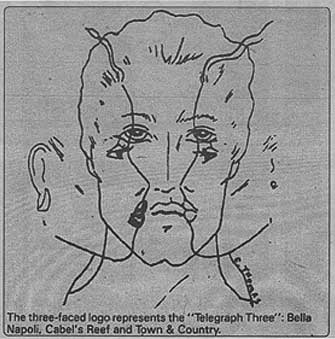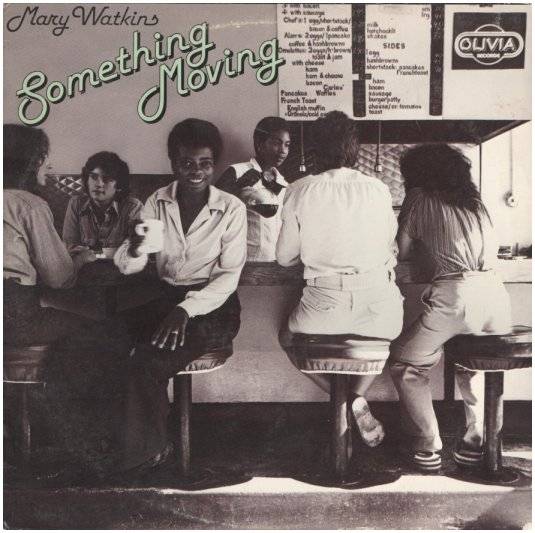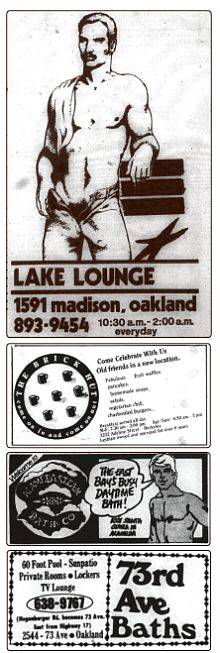Once Upon a Time in Oaktown: Difference between revisions
mNo edit summary |
m (Text replacement - "category:Gay and Lesbian" to "category:LGBTQI") |
||
| (2 intermediate revisions by 2 users not shown) | |||
| Line 107: | Line 107: | ||
''Thanks to East Bay photographer Daniel Lloyd and Jim Hall and to the Oakland Public Library for their assistance in researching this article.'' | ''Thanks to East Bay photographer Daniel Lloyd and Jim Hall and to the Oakland Public Library for their assistance in researching this article.'' | ||
[[category: | <hr> | ||
Listen to a 10-minute podcast at ''The Memory Palace'' on the [http://thememorypalace.us/2016/06/a-white-horse/ White Horse Bar] | |||
[[category:LGBTQI]] [[category:Women]] [[category:East Bay]] [[category:North Beach]] [[category:Gentrification]] [[category:Buildings]] [[category:1950s]] [[category:1970s]] [[category:1980s]] [[category:1990s]] [[category:2000s]] | |||
Latest revision as of 07:09, 16 October 2018
Historical Essay
by Michael Flanagan, originally published in the Bay Area Reporter March 12, 2015.
Remembering the lesbian and gay communities of the East Bay
An illustration published in the Bay Area Reporter about three East Bay gay-owned businesses.
Image: courtesy Bay Area Reporter
Those who forget the past are doomed to repeat it, or so the old adage would have us believe. There is a worse fate, however: to be forgotten and fade into obscurity.
A few months ago at one of the G-Spot events on gentrification at the GLBT Museum, a woman from the East Bay asked when the museum became interested in this topic. Aside from the fact that the question seemed odd (since the museum has only been open since 2012), it got me thinking about queer spaces in the East Bay and the role gentrification has and has not played there; because not too long ago there were several lesbian and gay communities there.
Lesbian and gay history in the East Bay stretches back at least to the 1950s. Many of us know that the Black Cat in North Beach challenged the Alcoholic Beverage Control (ABC) in the state for the right to serve gay patrons.
What you may not know is that around the same time, the festively named Mary's First and Last Chance, a lesbian bar at 2278 Telegraph Avenue in Oakland, also challenged the law and won (in 1959). It sounds like a lively bar, too. Nan Alamilla Boyd told of an ABC report in her book Wide-Open Town: A History of Queer San Francisco to 1965 which had this encounter:
Helen Davis, a policewoman, was on the premises in May of 1956 with another policewoman, Marge Gwinn. Buddy, a female waitress, greeted the policewomen who were later joined by the lesbian, Shirleen. Shirleen told Marge, 'You're a cute little butch.' Shirleen later grabbed Marge and kissed her. Buddy the waitress said just to watch it and that if they continued to do that they should go to the restroom.
Mary Watkins album cover, photographed at The Brick Hut.
Cover image: courtesy of JD Doyle, Queer Music Heritage
My own first encounter with LGBT culture in the East Bay came in the 1970s when I was a buyer for a record store and got the Mary Watkins album Something Moving on Oakland's Olivia records for the store. The album cover featured a photograph of the Brick Hut restaurant, a worker-owned feminist collective in Berkeley. A song titled "The Brick Hut" featured lyrics from lesbian poet Pat Parker.
So when I moved cross-country and started working at a record store in Berkeley, one of the places I would stop by for breakfast was the Brick Hut, which was at 3017 Adeline Street at the time.
In an article for KQED titled "LGBT Pride: Remembering the Brick Hut Café," collective member and later co-owner Sharon Davenport recounts:
When AIDS hit a group of customers affectionately named the Shattuck Street Fairies (SSF), we became a refuge and an information outlet for AIDS awareness.
I remember it as a great and funky breakfast spot (I was thrilled when I got to see the "Women Invented Cheese" poster from the back cover of Mary Watkins' album).
The Brick Hut lasted from 1975 through two moves until March 24, 1997, when economic woes forced their closure. Their last location was at 2512 San Pablo Ave.
Oakland scene
Ollie's was another center of the women's community in the North Oakland/South Berkeley area. With a performance space named after The Well of Loneliness author Radclyffe Hall, the bar at 4130 Telegraph Avenue presented dance bands, Olivia artists, film nights, art exhibitions, theater and more.
They had a monthly calendar and presented special events like masked balls. There was also a restaurant on premises (Yermama's) in the early 1980s. Ollie's was open from October 1980 to December 1988.
Fault lines in the community were apparent when the article "Amelia's Celebrates Ten Years While Ollie's Closes Its Doors" appeared in Coming Up! in December 1988. Carolyn Clone, an entrepreneur from Los Angeles, had opened the weekly event Code Blue in San Francisco and Ollie Olivera (who owned Ollie's) warned, "These places could be gone tomorrow, and the lesbian community would have nothing."
Clone thought "the women's scene seems quite healthy in San Francisco."
Olivera may have had a point, however. Between 1988 and 1991, five lesbian bars in the Bay Area (Ollie's, Baybrick, Peg's Place, Maud's and Amelia's) all closed. Clone left the Bay Area for Miami in 1993 (you can read more about her exploits in Florida by looking for "The Great Lesbian Club Wars" at the Miami New Times online).
The women's community in the East Bay also had two bookstores. A Woman's Place, which was at 4015 Broadway in Oakland, and the longer lived Mama Bear's at 6536 Telegraph.
Mama Bear's had an art gallery and was a coffeehouse as well. When asked why they were closing by the Bay Area Reporter's Zak Szymanski in March 2003, co-owner Allice Molloy said, "We're old."
All kidding aside, Mama Bear's exited the independent bookstore business at a very good time, before facing the onslaught of online booksellers which put other feminist and gay bookstores (like Boadecia's Books in Kensington and Different Light in San Francisco) out of business.
There was also a lively men's scene throughout the East Bay in the '80s and early '90s. Aside from the Steamworks, which is still going strong in Berkeley, there were two other bathhouses, the Alameda Steam Bath Co. at 1001 Santa Clara in Alameda (which billed itself as "the East Bay's busy daytime bath") and the 73rd Ave. Baths at 2544 73rd Avenue in Oakland.
And to keep up on the lively bar scene in the East Bay, there was a column by Nez Pas, known in real life as Peter Palm, the co-owner of Revol at 3924 Telegraph with his partner Ralph Tate. Nez Pas kept his readers up on the community events in Oakland, Walnut Creek and Hayward.
East Bay action
A few ads for East Bay gay and lesbian businesses that appeared in the Bay Area Reporter from 1980-1983.
Images: courtesy Bay Area Reporter
In the early '80s there was a group of bars near Lake Merritt. The first Bench and Bar (there have been three) was at 120 11th Street and was near the Lake Lounge at 1591 Madison and Lancer's, a disco at 3255 Lake Shore Avenue. In 1984 the Paradise Bar & Grill opened at 135 12th Street and billed itself as something special when you don't want to fight the traffic into the city.
The Bay Area Reporter advertised the East Bay bars in the early '80s with a map (not quite to scale; it makes Vallejo, Walnut Creek and Hayward look as if they are as close to one another as Berkeley and Oakland):
In 1982 the East Bay offers a fresh alternative. Come on over and stay awhile.
Later in the decade there was a triumvirate of bars that billed themselves as "the Telegraph three," which included Bella Napoli at 2330 Telegraph, Town & Country at 2022 Telegraph (which was in business until 1998) and Cabal's Reef at 2272 Telegraph (the last of these bars to survive, it closed in 2007).
One of the things which is clear from Nez Pas' columns was that these bars appealed to the people who had grown up and worked in the East Bay. The bars offered Super Bowl specials, chili cook-offs and pool tournaments as well as being involved with the Imperial Star Empire (the court system of Alameda and Contra Costa counties).
Another thing that comes through is the increasing impact of AIDS in the East Bay. Throughout the 1980s, more and more information is given about benefits for various East Bay charities.
And then, the closing of bars began.
Changes
On Oct. 1, 1987, this item appears in Nez Pas' column:
Yes, it's true. As of Oct. 31, Revol will just be a memory. The building has been sold, and the new owners are going to convert it back into six storefronts. Feelings are a little too sensitive right now to mention much more.
In 1985 Nez Pas put together a list of bars he remembered in the East Bay going back to Mary's First and Last Chance. There were fifty bars in that list.
While reading through this material, I was struck that these were working class men (Peter Palm was a teacher and his partner Ralph Tate was a commercial ship's captain) in a working class city and they worked and played hard while trying to keep their community and city together.
Much was made in the gay press about gay men "nesting" in the late '80s and early '90s. I suppose this, combined with those who fell ill, contributed to the failure of many of the bars in the East Bay.
Another factor was the pull of the bars from San Francisco, which remained vibrant during the early '90s. Regardless, there seems to have been a generational break from the time of the earlier bars to the time of effective AIDS treatments in the mid-'90s and this has held over to today.
It's important to remember that there are still bars in the East Bay. The Bench and Bar, moved and renamed Club BnB, and its upstairs companion bar Club 21, both remain a lively draw in downtown Oakland, as does the White Horse in North Oakland. The Pacific Center continues to act as a LGBT center (at 2712 Telegraph Avenue, Berkeley).
As Oakland has one of the highest percentages of lesbian and gay populations in the country, we should look to areas near these bars to rebuild community.
But we should also remember that when we talk about what factors build up and tear down our institutions, gentrification is not always the central factor and that sometime other historic factors come into play.
Nez Pas died on Dec. 23, 2006 in Reno (he was living in Palm Springs at the time) and Ralph Tate died on June 2, 2001. This column is in memory of their work with the community.
Thanks to East Bay photographer Daniel Lloyd and Jim Hall and to the Oakland Public Library for their assistance in researching this article.
Listen to a 10-minute podcast at The Memory Palace on the White Horse Bar



